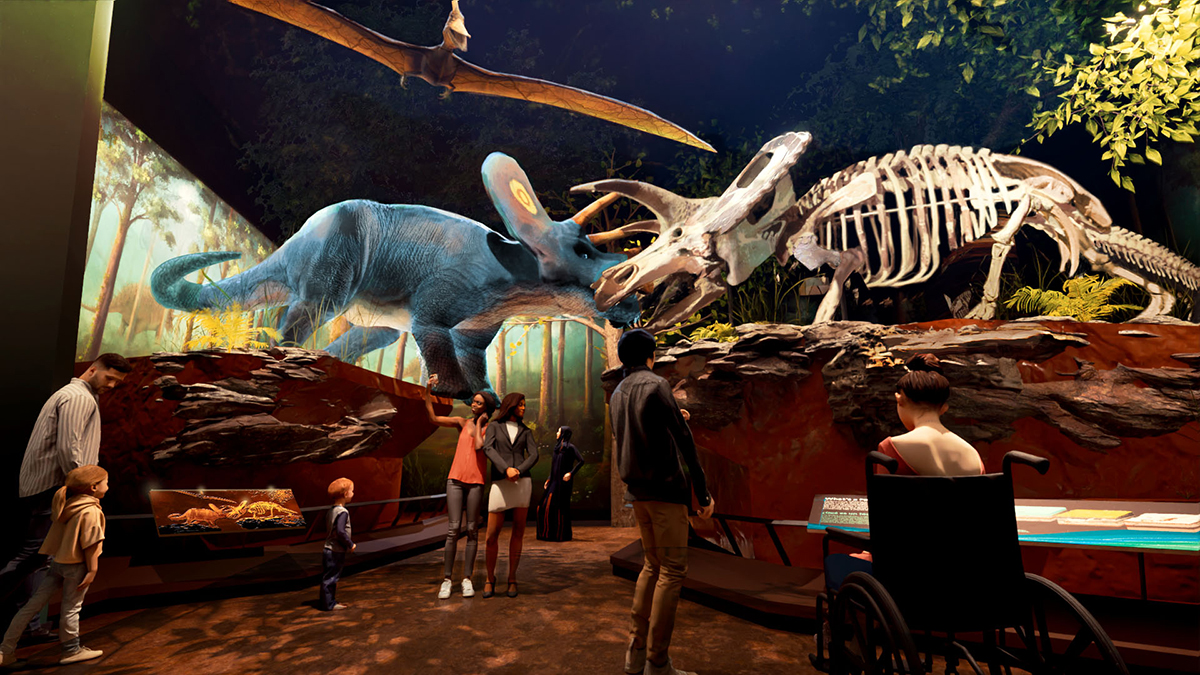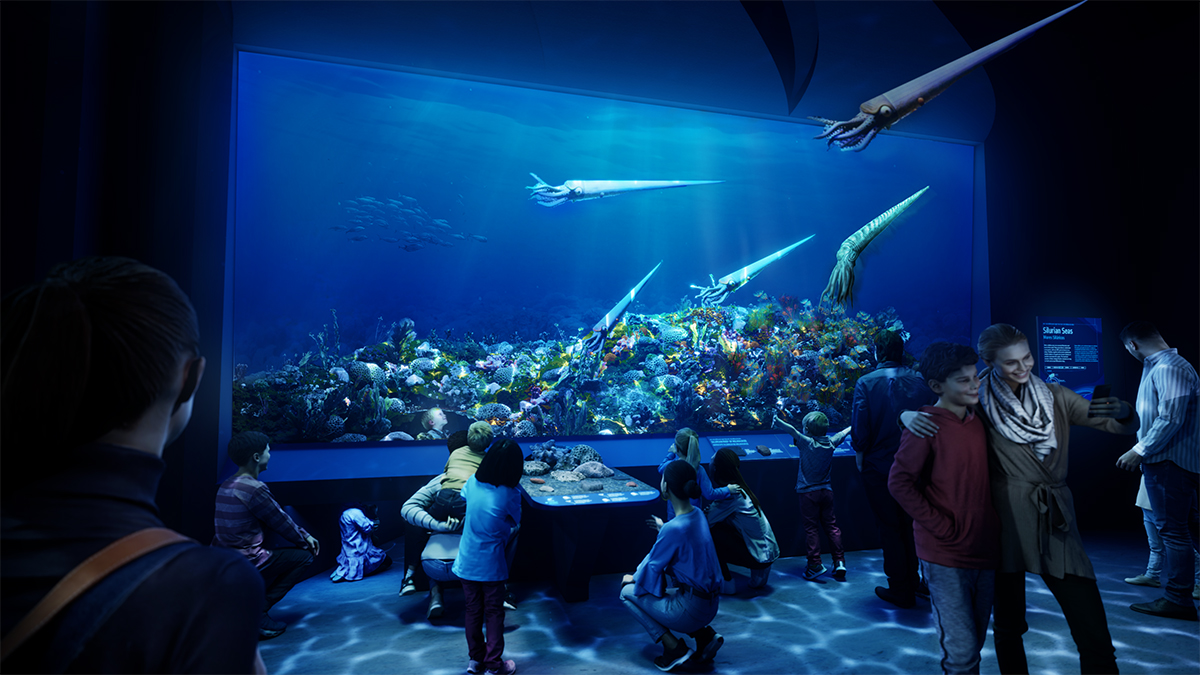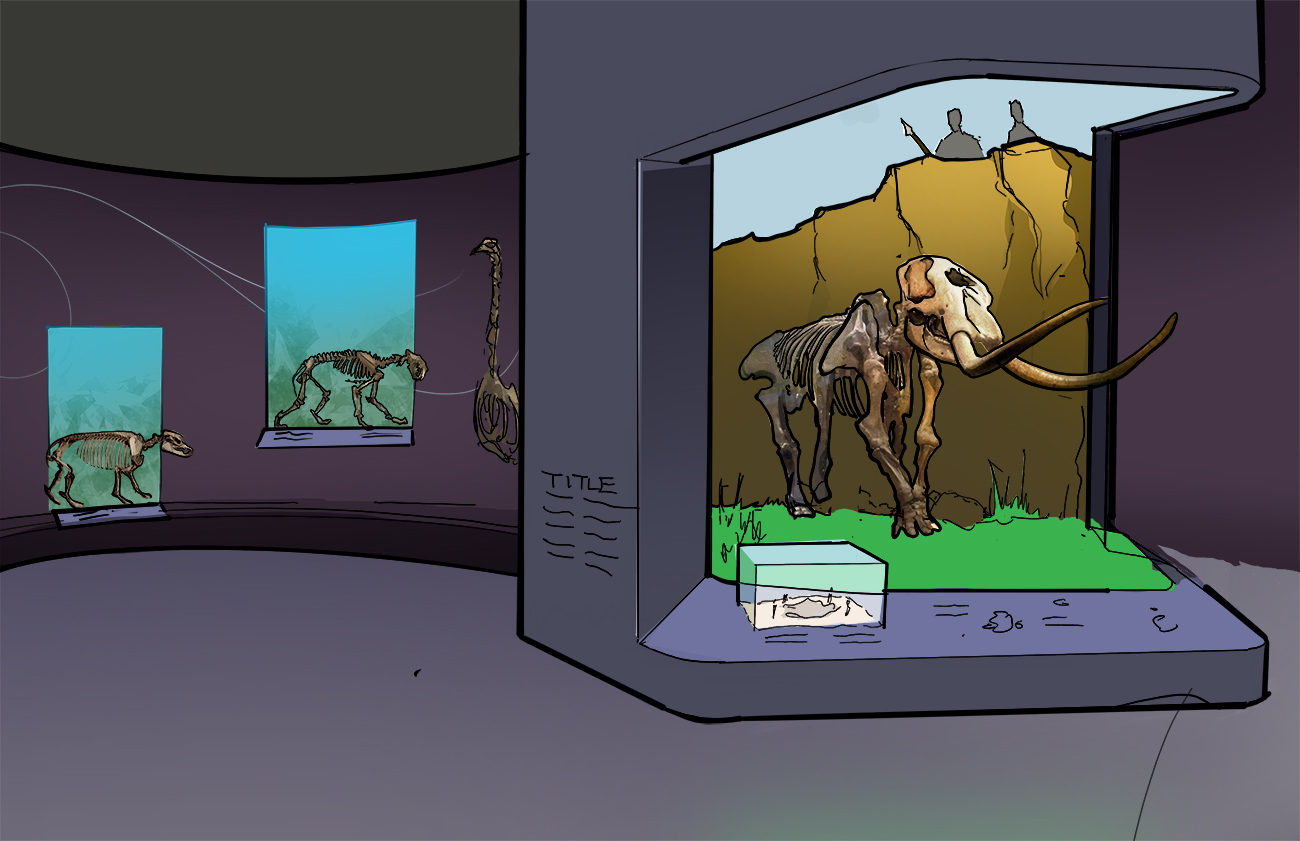


The Time Travel gallery offers visitors a glimpse at what life on Earth looked like millions of years ago through three of the planet's geological chapters: the Paleozoic, Mesozoic, and Cenozoic.
Featuring dinosaurs and other prehistoric creatures, the Time Travel gallery breathes new life into many of Milwaukee Public Museum's longstanding exhibits, from the Torosaur skeleton to the Silurian Reef diorama and the Hebior Mammoth skeleton.

The Paleozoic Hall
The Paleozoic Hall of the gallery is an exploration of the deep past that will examine what Earth looked like 540-250 million years ago, highlighting evidence of the earliest life on the planet, the process of fossilization, and the many ways in which landscapes have changed through plate tectonics, the impact of water, and more.
Silurian Reef
At this exhibit, visitors will feel like they are submerged in the tranquil, shallow waters of the Silurian seas that once covered what would become Milwaukee 425 million years ago when it was located near the equator.
Influenced by MPM's collection of more than 122,000 Silurian fossils, this exhibit will teach visitors about the evolution and diversification of ancient marine life through a multi-sensory approach, complete with dioramas, aquatic models that float above the visitor space, projections, a soothing wave soundscape, and an interactive, tactile tabletop where visitors will be able to touch replicas of ancient sea creatures, including coral.
Cambrian Trackway
This exhibit features a 2,600-pound slab of sandstone that contains half a billion-year-old animal footprints, called a trackway.
Discovered in central Wisconsin, the footprints, produced by an ancient arthropod (distantly related to centipedes and millipedes), demonstrate one of the earliest pieces of evidence of animal species moving from water to land.
This specimen has been kept in storage behind the scenes in the current Museum since 2017. We are excited to have a place for it on permanent display in the Future Museum. Visitors will be able to press a button within the exhibit that triggers sounds and a projected image of the creature scuttling across the rock.

The Mesozoic Hall
The Mesozoic Hall of the gallery will explore what Earth looked like between 250-65 million years ago, when dinosaurs dominated and left a legacy that continues to capture our imaginations today.
Torosaur Clash
This exhibit immerses visitors in a ferocious battle between two Torosaurs — one depicted using the fossilized skeleton currently on display at MPM and the other, a model indicating the size and might of a fully fleshed dinosaur. Visitors will encounter this larger-than-life battle scene and feel as if they are part of the clash.
The exhibit is inspired by a puncture wound on the Torosaur skeleton that, through scientific research, was determined to be caused by another Torosaur while likely fighting over resources or mates.
Visitors will also find a familiar MPM face: The T. rex will make another appearance in the Torosaur Clash, this time lurking around a bend, possibly waiting for its next meal.

The Curtis L. & Jean E. Carter Cenozoic Hall
The Curtis L. and Jean E. Carter Cenozoic Hall of the gallery will explore the early evolution of mammals and the arrival of the first humans, taking a closer look at how our changing planet responds to and influences human behaviors. This time period represents Earth's current geological era, which began 65 million years ago.
Hebior Mammoth Hunt
This exhibit shows the 14-foot-tall skeleton of a woolly mammoth currently on display in MPM and a group of stealthy human hunters perched above it on the edge of a bluff, ready to strike. The scene tells the story of predator/prey dynamics, coevolution, adaptation, and human ingenuity. A dramatic audioscape will further propel visitors into the scene, creating a truly immersive experience.
In front of the hunt scene, a mini diorama will explain how humans butchered the mammoth they hunted and how scientists determined their methods by studying marks left on the mammoth's bones when it was discovered in southeast Wisconsin. Scientists determined the marks are among the oldest evidence of human habitation in North America. Carbon dating places the mammoth's death at 14,500 years ago.
Other prehistoric mammal fossils, such as the skeleton of a saber-tooth cat and giant tapir, will be on display to show how different animals filled in niches and evolved over time.

